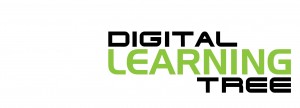What Is Flip Teaching?
Flipped Classroom is an inverted method of instruction where teaching and learning take place online outside of the class while homework is done in the classroom. Advocates of this approach believe that this is the ideal method of instruction in our digital age. They basically build their judgment on the following facts :
- Flipped Classroom shifts the learning responsibility and ownership from the teacher’s hands into the students’.
- Students tend to perform better when they control when, where and how they learn.
- Teachers no longer dispense knowledge but rather guide and direct while students are the real active learners.
- Teachers create animated videos and interactive lessons and lectures and students access them at home in advance of class. In this way all students can re-watch the video tutorials whenever they want.
- Classroom time can be geared towards data collection, collaboration, and application.
- Class becomes a place for students to work through problems, advance concepts, and engage in collaborative learning.
- Flipped Classroom also allows teachers to reflect on and develop quality and engaging learning opportunities and options for internalization, creation, and application of content rather than just fluff or time filling assignments.
This course is not just a collection of videos – it is a compilation of free tools to help teachers integrate technology into the classroom. We have found screen capture software, QR Code makers (and readers), smartphone apps, educational websites, and many other resources to help teachers. In order for technology to be successfully implemented, several truths have emerged over the past few years:
The tools should be free.
The tools should be easy to use.
The tools should actually facilitate student learning (not just implementing technology for the sake of SAYING we are implementing technology).
Flipped Classroom depends a lot on educational technology and Web 2.0 tools such as podcasting and screencasting applications. Flipped Classroom A New Learning Revolution: Provided by www.educatorstechnology.com
“In most Flipped Classrooms, there is an active and intentional transfer of some of the information delivery to outside of the classroom with the goal of freeing up time to make better use of the face-to-face interaction in school. When appropriate, information transfer typically takes advantage of technologies like podcasting or screencasting. This allows for more time to individualize instruction in the class time and keeps content alive for remediation, review, or other reference when needed. Learners have immediate and easy access to any topic when they need it, leaving the teacher with more opportunities to expand on higher order thinking skills and enrichment. Offloading some information transfer allows a classroom to develop that understands the need for teacher accessibility to overlap with cognitive load. That is, when students are assimilating information, creating new ideas, etc. (upper end of Bloom’s Taxonomy) the teacher is present to help scaffold them through that process.”
A direct and concrete example of Flipped Classroom concept is the popular Khan Academy. This website has completely reshaped home instruction by providing more than 2800 free videos and tutorials available in 16 languages and covering a wide range of topics such as Math, Physics, Geometry, cosmology, microeconomics and many more. Flipped Classroom should not be thought of as a single stand-alone instruction cycle but rather as a part of a general educational system that overlaps with other instructional tools such as Blended Learning, Universal Design for Learning, Inquiry Learning, Reverse Learning, and Online Learning.
Watch the Khan Academy Video Below to see “How It Works”.
Teacher Notes
Flipped Teaching Course Instructions from Shannon Holden on Vimeo.
Khan And Beyond the Many Faces of the Flipped Classroom.
Please remember when you visit some of the websites below please remember to click on the top left back button to return to your “Flip Teaching Class”.
https://edublog.techsmith.com/2011/09/the-flipped-classroom—what-it-is-what-it-isnt.html
You also might be wondering ….
How does Sal Khan produce his screencasts and what software and hardware does he use?
Answer:
He uses Smoothdraw 3, which is freeware and can be downloaded from here:
Source(s):
https://www.khanacademy.org/about/faq
Where he says: “I use Camtasia Recorder ($200)
Plus: SmoothDraw3(Free)
Plus: Wacom Bamboo Tablet ($80) on a PC.”
